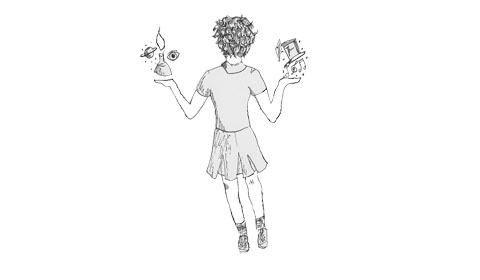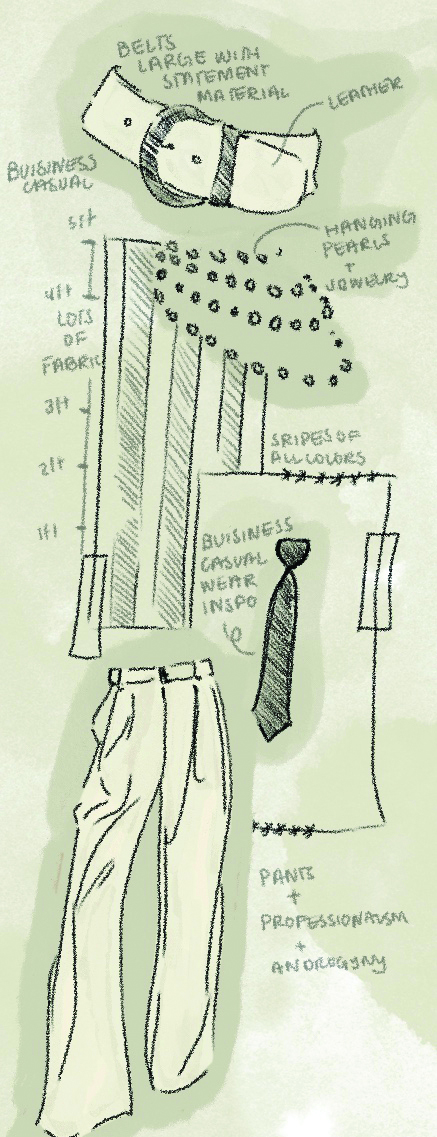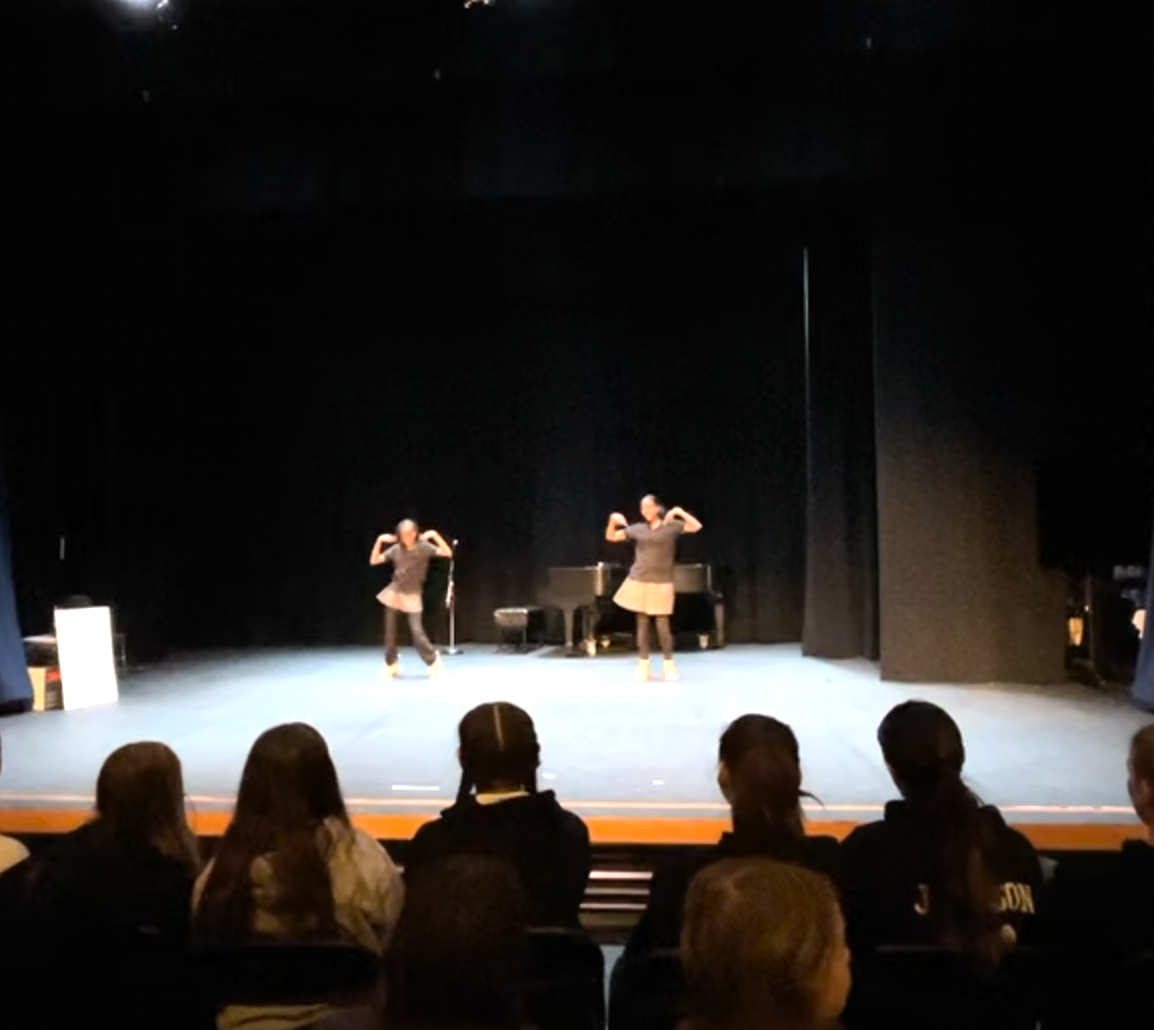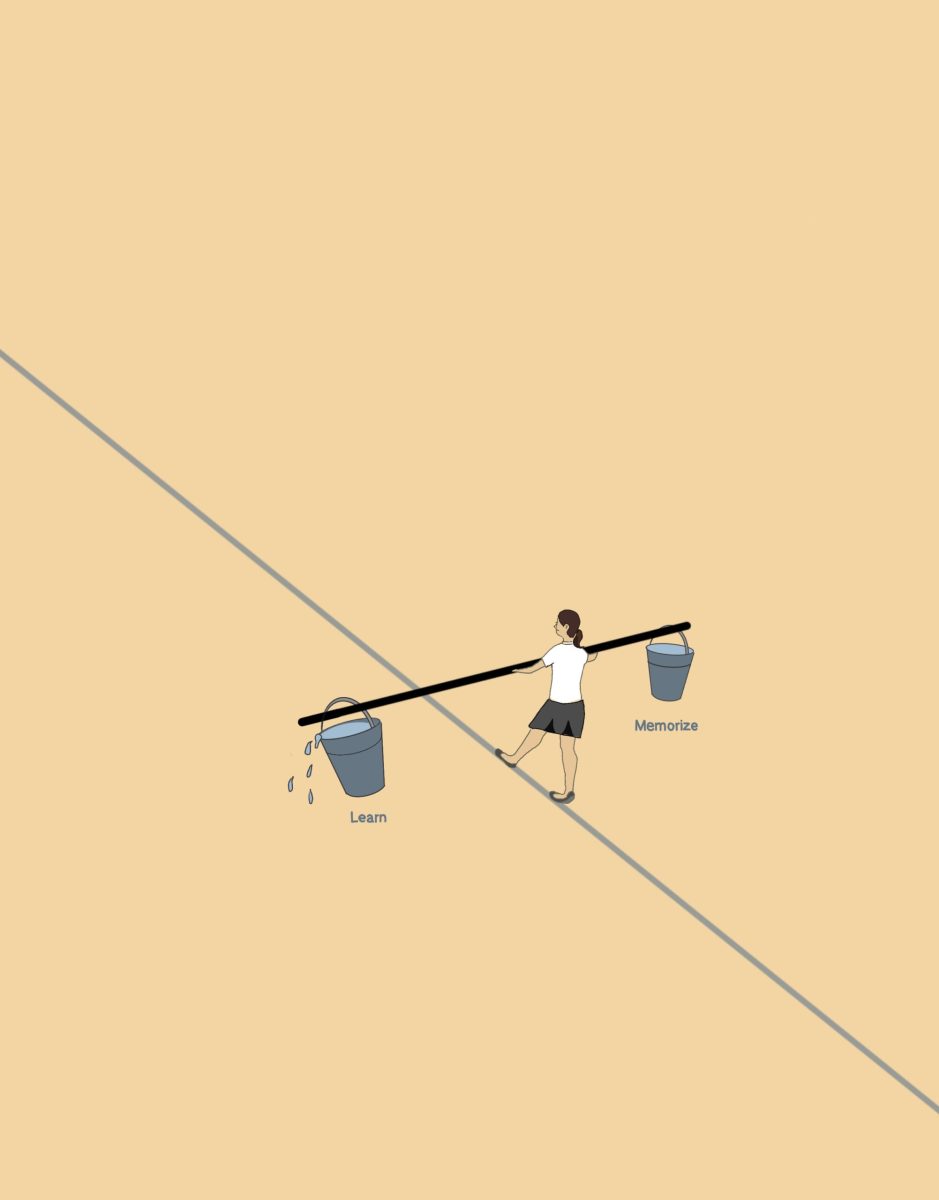
When Kamilah ’15 chose her courses for her senior year, she did not register for the courses she truly hoped to take. Kamilah wanted to take another language class, for example, but the School prompted her to take a second math course.
Kamilah’s experience reflects a dilemma that many Marlborough girls encounter. They want to study the humanities but feel that they need to take more science, technology, engineering and math (STEM) classes rather than courses about history or literature or art.
The focus on STEM is a national educational trend. The Obama administration has endorsed STEM courses that could direct students to more advanced and high paying jobs. The Presidential Fiscal Year 2015 Budget Proposal allocates $170 million to schools’ STEM departments and the training of teachers in STEM subjects. According to the National Math and Science Initiative, high school math students in 29 countries and high school science students in 22 countries outperform American students in math and science.
Women are underrepresented in STEM fields. According to the National Science Board, in 2010, only 28% of workers in science and engineering were women, up from 21% in 1993. Women have made the most ground in the biological sciences, where they now make up 48% of the field, twice as much as they did in 1993.
At Marlborough, STEM opportunities are slated to increase through a new STEM initiative program led by Math Department Head Chris Talone. Some students have expressed that the recent emphasis on STEM has created pressure for girls to take math and science classes instead of humanities courses.
How is Marlborough expanding STEM initiatives? Do students feel pressure to take STEM courses? What are the real world benefits of taking STEM classes?
THE GROWTH OF STEM
In recent years, Marlborough has evaluated ways in which it can expand STEM opportunities, including buying a 3-D printer and adding new courses, due to parent and student demand and an increased emphasis on STEM in the outside world.
“I think STEM is important. I think leadership is important. I think global citizenship is important. So, I would say that those are probably the three—and then personal best—I think those are probably the four initiatives I would say, as a faculty, we are thinking most about,” Assistant Head of School and Head of Upper School Laura Hotchkiss ’86 said.
Led by Talone, Marlborough’s STEM Committee has overseen the expansion of STEM opportunities at the School since its formation in August 2013. The goal of the committee, which includes eight science and mathematics instructors and Director of Administrative and Academic Technology Stuart Posin, is to identify the School’s current STEM programs, increase awareness and appeal of computer programming and incorporate programming in all Middle School math and science classes starting in 2014-2015.
The committee discovered that although Marlborough has strong programs in the individual STEM departments, the School lacks academic opportunities that combine the four elements.
“Yes, we do science. Check. Yes, we do technology. Check. But it is supposed to be those things together,” Science Department Head Jennifer Garrison Ross said.
Garrison Ross indicated that the Robotics team is an excellent example of an integrated STEM opportunity that already exists at Marlborough.
Students also delve into STEM fields during many science projects and labs. For their final projects, physics students build miniature bridges, for example, and eighth graders complete a renewable energy project building their own wind and solar energy models with kits.
“I think this is a push deep down with the ability for people to critically analyze [real world problems] and come up with [real world] solutions. It’s not that our kids aren’t smart; it’s that they aren’t willing to take the risk or know how to put those pieces together,” Garrison Ross said.
Starting next year, students will be able to take Introduction to Coding I and II in the fall and spring semesters, respectively. Together, the classes will prepare students to take AP Computer Programming the following year. So far, 34 students have enrolled in coding classes next year.
At Marlborough, the acronym for STEM will have an added “A” for arts, meaning that courses whose subject matter crosses the disciplines of science, technology, engineering, arts and math will be STEAM courses. With the arrival of the 3-D printers on campus, Introduction to Animation and 3-D Modeling as well as 3-D Product Design will be offered as art electives for the first time next year. The 3-D printers will also be a useful resource for the Robotics team, who will utilize the machines to design and manufacture parts.
In explaining why Marlborough girls may be slow to embrace STEM, Garrison Ross cited studies that show that girls are less willing to try something they do not know how to approach. Carol Dweck, professor of psychology at Stanford University, found in a collection of studies in the 1980s that when girls find something challenging, they are quicker to give up than boys. In fact, the higher a girl’s IQ, the higher the likelihood that she will give up.
“Boys are willing to jump into a problem. But if a girl doesn’t know exactly what step to take next she might be less willing to try something,” Garrison Ross said.
Students and parents also influenced the creation of new STEM classes. Previously, at open houses, many prospective parents and students asked if Marlborough offered STEM programming. Many students have expressed enthusiasm about the new programming classes.
“I think it’s great that Marlborough is bringing new diverse STEM classes into the curriculum. My sister [Kendall ’18] is taking [Introduction to Coding] next year, and she is really excited about it. I would definitely take it if I had the time in my schedule,” Sydney ’16 said.
Garrison Ross believes that the emergence of STEM programs is fairly new at girls’ schools.
“I think if you look back 25 years, people would say that, because we are a girls’ school, we are more humanities-based. And I think that’s shifted to a more balanced perspective [of both humanities and STEM opportunities],” Garrison Ross said.
STEM VS. HUMANITIES?
Some students said they feel pressure from the School to take advantage of new STEM courses while others said that they have not witnessed a trend of increased participation in science-oriented classes.
“I feel that Marlborough stresses math and science as part of the curriculum, and being that it has a competitive environment, I feel like to keep up I have to take a lot of these courses,” Kamilah said. She added that she thinks that the sheer number of science and math programs creates the image that Marlborough focuses on STEM more than the humanities and creates the expectation that students should enroll in STEM classes.
Similarly, Jaya ’16 said that the school emphasizes the benefits of STEM over the humanities.
“I think arts are used as something to explore, but you should go into science and you should go into math and do something there because you’re going to make the money and make [the School] look good,” Jaya said.
Others disagree that Marlborough focuses on STEM classes and maintain that Marlborough provides a balanced number of opportunities in both the sciences and the humanities.
“I certainly think that survey data would show that girls in the humanities feel as though they don’t have as many opportunities for advanced classes as girls in the STEM fields: math and science. I’m not sure when I’ve actually gone through and counted all the opportunities in each area that that’s true,” Hotchkiss said.
Recent graduates also noticed the increased number of STEM courses, but Katherine Ewell ’13 believes that even though the pressure for girls to get involved with STEM initiatives exists, it is up to the student to decide whether or not to act on that pressure.
“I definitely feel like it was expected of everyone to take AP math and science classes,” Ewell said. “I ended [up] not making as many decisions. I took a lot of AP humanities classes as well as AP math and science classes.”
Some students agree that there is a divide between science and humanities-oriented students but that the School does not necessarily favor one over the other.
“I think there are equal opportunities at Marlborough to excel in both. I don’t think Marlborough is one-sided on that. I think girls are more pressured into the dichotomy,” Izzy ’15 said.
English Department Head Reid Cottingham suggested that pressure to take STEM classes may come from outside Marlborough.
“I would say [that there is pressure] from the media in a way, because we keep hearing these scary, doomsday kind of premonitions about the death of the humanities, so I think there is definitely more of an emphasis put on STEM in kind of the general media,” Cottingham said.
REAL WORLD APPLICATION
Studying STEM at Marlborough could benefit girls in the future by providing job opportunities in STEM fields and equipping girls with skills to apply to other fields. Although some students have expressed frustration with the pressure to take AP science and math classes, many said that the real world benefits justify this pressure.
Nationally, more job opportunities are available in STEM fields. According to projections of the U.S. Bureau of Labor Statistics, employment in science and engineering occupations will grow by 20.6% between 2008 and 2018, more than twice the rate of other occupations.
“When you go into one of the STEM sciences, those are very specific and you know what you’re going to be doing. I think anyone who goes to college will consider that. At the end, I think people are going to do what they’re interested in,” Olga Acosta, a pediatrician at Kaiser Permanente, said.
According to Talone, because women are especially underrepresented in STEM, there are more job opportunities for women in the field.
“I know finding women computer engineers is very hard for companies, so they often have to go to other countries, like India and China. So I just think exposing more girls to STEM topics might get more people more interested and maybe they will choose that as a career,” Talone said.
Not all girls will join the STEM world after high school, but having coding or advanced math skills could benefit girls in whatever field they enter.
















